Red Maple Tree
- June 6, 2023
- 0 comment

Common Name: Red Maple
Botanical Name: Acer rubrum
Family: Sapindaceae
Plant Type: Deciduous tree
The Red Maple (Acer rubrum) is a breathtaking tree that never fails to captivate with its stunning display of vibrant colors. Known for its brilliant red foliage during the fall season, this magnificent tree has earned its place as one of North America’s most beloved trees. In this blog, we will explore the various aspects of the Red Maple, from its description and botanical details to its care requirements, benefits, and potential drawbacks.
Scientifically known as Acer rubrum, belongs to the family Sapindaceae. It is a deciduous tree with a distinctive rounded or pyramidal crown and an impressive density of branches and foliage. The leaves are palmate-shaped, typically displaying three to five lobes. What truly sets the Red Maple apart is its remarkable color transformation throughout the seasons. In the spring, its leaves emerge with a vibrant red hue, transitioning to green during summer, and finally turning into a breathtaking display of fiery red or orange in the fall.
Read about Red Maple Lumber

Mature Size
Red Maples can reach impressive dimensions, typically growing between 40 to 60 feet (12 to 18 meters) in height, with a similar spread. In exceptional cases, they can even exceed 100 feet (30 meters) in height.
Growth Rate
The Red Maple is characterized by a moderate to fast growth rate, adding approximately 1 to 2 feet (30 to 60 centimeters) in height per year.
Attributes
The Red Maple offers several remarkable attributes. Its show-stopping autumn foliage, with hues ranging from vivid red to brilliant orange, adds a striking aesthetic appeal to any landscape. Additionally, these trees possess a high level of adaptability, making them suitable for different environments and climates. Their wide-spreading canopy provides valuable shade, and their attractive appearance contributes to the overall beauty of outdoor spaces.
Wildlife Value
The Red Maples play a vital role in supporting wildlife. The flowers of this tree provide a valuable source of nectar for bees, while the seeds serve as a significant food source for birds and small mammals. Squirrels particularly rely on Red Maple seeds as a staple part of their diet.
Care
Red Maples generally require minimal maintenance once established. Adequate watering, especially during drought periods, is crucial for optimal growth. Mulching around the base of the tree helps retain soil moisture and suppress weed growth. Pruning should be performed to remove dead or diseased branches and to maintain a desired shape.
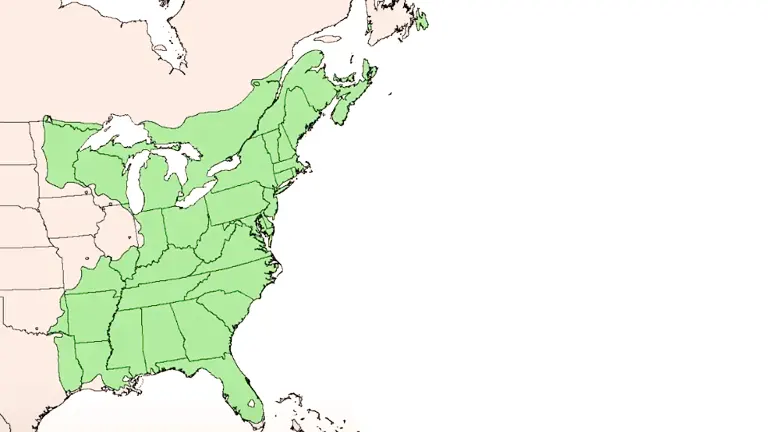
Native Area
The Red Maple is native to eastern North America, spanning from Canada to Florida and extending westward to Texas. It thrives in a diverse range of ecosystems, including wetlands, swamps, and upland forests.
Sun Preference
Red Maples exhibit a versatile sun preference, thriving in a range of lighting conditions. While they can tolerate partial shade, providing them with ample sunlight will promote their optimal growth and enhance the vibrancy of their fall foliage. Red Maples truly shine when basking in the full glory of the sun, as it helps stimulate the production of the pigments responsible for their stunning red and orange autumn colors.
However, it’s worth noting that Red Maples can also adapt to partially shaded areas, making them suitable for landscapes with varying light conditions. In such cases, they may display slightly less intense fall colors compared to those receiving abundant sunlight. Whether planted in full sun or partial shade, Red Maples remain resilient and maintain their overall health and beauty. So, while they appreciate the sun’s warmth and brightness, they are adaptable enough to thrive in a range of lighting environments, making them a versatile choice for various garden settings.
Soil Preference
Red Maples are adaptable to various soil types, but they thrive best in moist, well-drained soils. They can tolerate both acidic and alkaline soil conditions, showcasing their versatility.
Benefits
The Red Maple offers numerous benefits to both humans and the environment. Its expansive canopy provides shade, reducing cooling costs during hot summers. The extensive root system of Red Maples helps prevent soil erosion, promoting soil stability. Additionally, these trees are excellent absorbers of carbon dioxide, contributing to improved air quality. Moreover, their aesthetic value and striking fall foliage make them highly desirable for landscaping and ornamental purposes.
Invasive
While Red Maples are not classified as invasive, they can occasionally escape cultivation and naturalize in certain regions. It is essential to monitor their growth and prevent unwanted spread into native ecosystems.
Lifespan
The lifespan of Red Maples can vary, but under favorable conditions, they can live for 80 to 100 years, providing lasting beauty and enjoyment.
Disadvantage
One potential disadvantage of Red Maples is their shallow root system, which can sometimes lead to surface root damage or interfere with paved areas. Additionally, they may produce an abundance of seeds, resulting in self-seeding or unwanted seedlings in the vicinity.
Edible or Not
While the sap of Red Maples can be tapped and used to make maple syrup, it is important to note that the sugar content is generally lower than that of the Sugar Maple (Acer saccharum). The seeds of Red Maples are not typically consumed.
Habitat Requirements
Red Maples are remarkably adaptable trees that can thrive in a wide range of habitats. While they are often associated with wetland areas, such as swamps and floodplains, they can also be found in upland forests and urban landscapes. This adaptability is one of the factors that contribute to their widespread distribution across eastern North America.
In wetland habitats, Red Maples play a crucial ecological role. They are often found in low-lying areas or near bodies of water, where they help stabilize the soil and prevent erosion. Their extensive root systems are well-suited to absorb excess water, making them tolerant of periodic flooding. In fact, Red Maples have the ability to survive and even thrive in areas that experience occasional waterlogging.
In upland forests, Red Maples can be found alongside other tree species. They are well-adapted to a variety of soil types, including loam, clay, and sandy soils. While they prefer moist, well-drained soils, they can tolerate drier conditions once established. Red Maples are often part of the early successional stages of forest ecosystems, meaning they are among the first trees to colonize disturbed or cleared areas.
In urban landscapes, Red Maples are a popular choice for their adaptability, aesthetic appeal, and tolerance to urban conditions. They can withstand pollution, compacted soils, and the heat island effect found in cities. Red Maples provide shade, improve air quality, and contribute to the overall beauty of parks, streets, and gardens.
Name Origin
The common name “Red Maple” is derived from the vibrant red color that the leaves display during the autumn season. The botanical name, Acer rubrum, refers to the red pigment found in the tree’s wood.
Fun Facts
- Red Maple leaves exhibit a beautiful mix of colors during the fall, including shades of red, orange, and yellow, creating a stunning mosaic of autumn hues.
- The Red Maple holds the honor of being the state tree of Rhode Island, and its leaf is prominently featured on the Canadian flag.
- Red Maple wood is commonly used in the production of furniture, cabinetry, and flooring due to its attractive grain patterns and durability.
Characteristics
Apart from their striking autumn foliage, Red Maples feature smooth gray bark when young, gradually developing shallow furrows and ridges as they mature. The branches of Red Maples tend to grow in a somewhat horizontal pattern, with ascending branchlets.


Varieties
Several popular Red Maple cultivars are available, each offering unique variations in color intensity and growth habit. Some notable varieties include ‘October Glory,’ ‘Red Sunset,’ and ‘Autumn Blaze.’
Pruning
Pruning plays a vital role in maintaining the health, aesthetics, and structural integrity of Red Maple trees (Acer rubrum). Regular pruning helps remove dead, damaged, or diseased branches, improves air circulation, and encourages new growth. Here are some key considerations and guidelines for pruning Red Maples:
- Timing: Pruning Red Maples is best done during late winter or early spring before new growth begins. This dormant period allows the tree to heal and recover more efficiently. Avoid pruning in late summer or fall as it may stimulate new growth that could be susceptible to winter damage.
- Dead or Diseased Branches: Start by removing any dead, diseased, or damaged branches. These can be identified by their lack of foliage, discoloration, or signs of decay. Pruning these branches prevents the spread of diseases and allows the tree to allocate resources to healthier areas.
- Structural Pruning: To promote a strong and well-balanced canopy, consider thinning out crowded or crossing branches. Remove branches that grow inward toward the center of the tree, as they can create congestion and hinder proper airflow. Aim for an open canopy that allows sunlight to penetrate through and encourages even growth.
- Shaping and Size Control: Red Maples can grow quite large, so pruning can be used to manage their size and shape. If your tree has outgrown its space or has undesirable branching patterns, selective pruning can help control its growth and improve its overall form. However, avoid excessive pruning that removes more than 25% of the tree’s canopy, as it can stress the tree and negatively impact its health.
- Pruning Cuts: Make clean pruning cuts just outside the branch collar, which is the swollen area where the branch attaches to the trunk or larger branch. Avoid leaving stubs or cutting too close to the trunk, as this can impede the tree’s healing process and leave it vulnerable to pests and diseases.
- Tools and Safety: Use sharp, clean pruning tools, such as bypass pruners or pruning saws, to ensure smooth cuts and minimize damage to the tree. For larger branches, use proper pruning techniques, such as three-cut pruning, to prevent bark tearing and injuries. Prioritize safety by wearing appropriate protective gear, including gloves and safety glasses.
- Professional Assistance: If you are unsure about pruning or dealing with larger branches, it’s recommended to seek the assistance of a certified arborist. Arborists have the expertise and equipment to handle pruning tasks safely and effectively, ensuring the long-term health and well-being of your Red Maple tree.
Remember, pruning should be done with the goal of maintaining the tree’s natural form and enhancing its health, rather than excessive or unnecessary cutting. Regular monitoring and selective pruning can help keep your Red Maple tree in optimal condition, allowing it to thrive and continue adding beauty to your landscape for years to come.
Propagating
Red Maples can be propagated through various methods, including seeds, cuttings, and grafting. Growing from seeds is the most common and straightforward approach.
Common Pests & Diseases
While Red Maples are generally hardy trees, they can still be affected by certain pests and diseases. Here are some of the common ones:
Common Pests:
- Aphids: These small, soft-bodied insects can cluster on the undersides of leaves, sucking sap from the tree. They can cause leaf curling, yellowing, and the development of a sticky substance called honeydew.
- Scale Insects: Scale insects are tiny, immobile pests that attach themselves to the bark of Red Maple trees. They can cause leaf yellowing, stunted growth, and a decline in overall tree health.
- Caterpillars: Various types of caterpillars, such as gypsy moth caterpillars and tent caterpillars, can feed on Red Maple leaves, causing defoliation and weakening the tree.
- Japanese Beetles: These metallic green beetles feed on the leaves of Red Maples, resulting in skeletonized foliage and weakened tree health.
- Spider Mites: These microscopic pests can infest the foliage, causing discoloration, stippling, and webbing on the leaves.
Common Diseases:
- Tar Spot: Tar spot is a fungal disease that causes dark, tar-like spots on the leaves of Red Maples. While it is mostly a cosmetic issue and doesn’t cause severe harm to the tree’s health, heavy infections can lead to premature leaf drop.
- Anthracnose: Anthracnose is a fungal disease that affects many tree species, including Red Maples. It causes brown or black lesions on leaves, twigs, and branches. Severe infections can lead to defoliation and weaken the tree.
- Verticillium Wilt: This fungal disease can affect Red Maples, causing wilting, yellowing, and eventually death of branches. It can be challenging to control once a tree is infected.
- Powdery Mildew: Powdery mildew is a fungal disease that creates a powdery white coating on the leaves of Red Maples. It can cause leaf distortion and premature leaf drop but is rarely fatal to the tree.
It’s important to note that while these pests and diseases can affect Red Maples, proper tree care practices such as regular monitoring, maintaining tree health, and prompt treatment when necessary can help prevent and manage these issues. Consulting with a professional arborist or local extension service can provide specific guidance on pest and disease management for Red Maples in your area.
Frequently Asked Questions
- Are Red Maples suitable for small gardens?
Yes, Red Maples can be pruned and maintained at a size suitable for smaller gardens. Alternatively, consider selecting a smaller variety if space is limited. - Can Red Maples tolerate flooding?
Red Maples can tolerate occasional flooding but prefer moist, well-drained soils. Prolonged periods of standing water may lead to root rot and other issues. - How can I enhance the fall color of my Red Maple?
To enhance the fall colors of your Red Maple, provide adequate sunlight and ensure regular watering to promote healthy foliage.

John Carlos
Forestry AuthorThe beauty of logging isn't just about felling trees. It's about understanding nature, mastering the art of chainsaws, and respecting the environment. I believe in sharing my experiences and knowledge, ensuring that we move towards a sustainable future together.

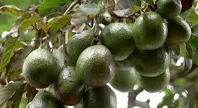


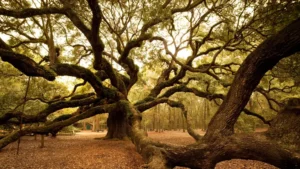

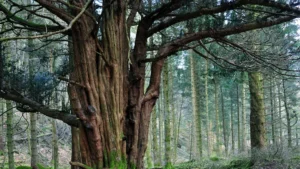

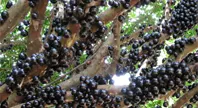
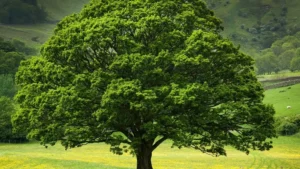


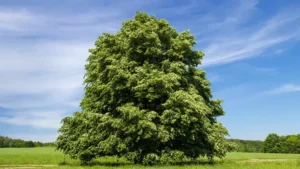
Leave your comment